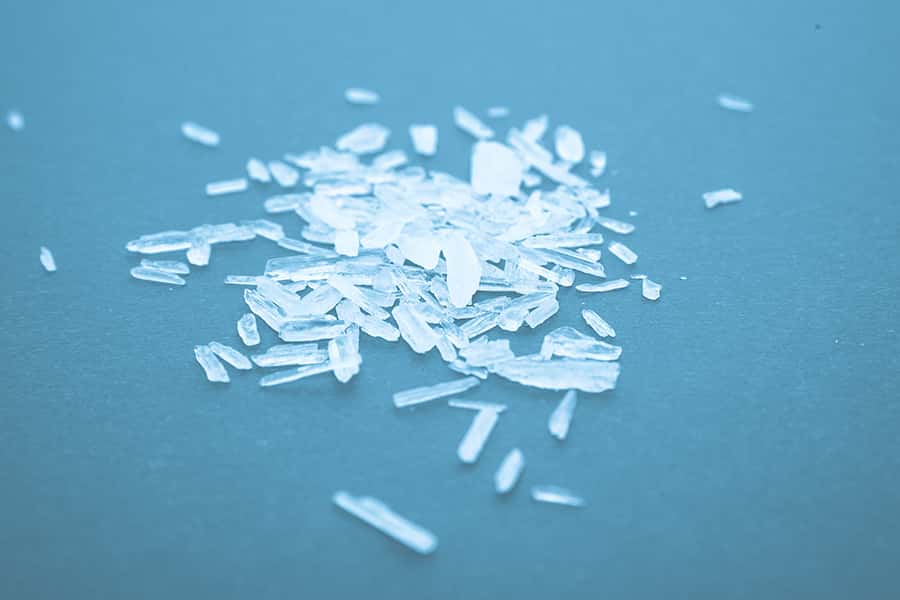Methamphetamine is a toxic drug that destroys your body and ruins your appearance.
Meth users often have pot-marked faces due to acne or picking scars. Meth use leads to decaying of the teeth and poor dental health. But what is most notable is that the bodies of meth users appear to quickly deteriorate, a condition that many have described as accelerated aging.
The Effects of Meth
People initially start taking meth because they enjoy the feeling they experience: the inducement of euphoria, reduced appetite, heightened arousal, and decreased fatigue. But these effects are only short-lived. Eventually feelings of anxiety, paranoia, and depression emerge. The initial effects of the drug are lost, so the ability to feel euphoria is reduced and the person often just feels fatigued. Meth users might have other symptoms, such as increased breathing rate, difficulty sleeping, headache, elevated blood pressure, heart attack, tremors, or seizures.
Methamphetamine Addiction
Methamphetamine induces addiction by interrupting the reuptake of the neurotransmitter dopamine, as well as other similar neurotransmitters. Meth also increases these neurotransmitters’ release into the synaptic spaces in the brain. Over time, this damages certain nerves that have dopamine receptors and makes them less likely to respond to the chemical when it’s present.
Because dopamine is involved in regulating a wide range of activities (memory, sleep, mood, pleasure, movement, behavior, and cognition), damaging the neurons that process dopamine have profound effects on the body. Meth users are known to have panic attacks and exhibit psychosis.
Despite the negative impact of the drug, meth users have a particularly hard time quitting because of how the drug alters the brain and affects behavior. Methamphetamine causes people to engage in tasks repetitively, which become noticeable when the task is no longer meaningful. For example, a person might repetitively clean something, but the rest of the residence is in complete disorder. This drug-induced behavior of repeating meaningless tasks fuels continued drug use, which worsens the user’s health.
Meth Use Associated with Aging
Methamphetamine users often exhibit diseases that are associated with aging, such as coronary atherosclerosis (hardening of the heart arteries), pulmonary fibrosis (scar tissue formation in the lungs), and liver steatosis (fatty liver disease). Meth is believed to cause a kind of accelerated aging, but only for the past few years has a scientific explanation been available to explain how meth causes this. Researchers now think that meth accelerates aging by altering fatty acid metabolism in a way that causes increased inflammation, cell damage, and cell death.
Meth Destroys the Body by Altering Fat Metabolism
Methamphetamine use generates the production of reactive oxygen species (ROSs), molecules that have previously been identified as contributors to aging. ROSs are commonplace in oxygenated environments, so our bodies have mechanisms to handle them and fix the damage they cause.
ROS leads to the increased production of a protein called nuclear factor kappa beta (NF-kB), which causes the fatty acid ceramide to be expressed. In an animal model (a rat that gives itself methamphetamine), researchers found that ceramide production increased in a part of the brain, in the skeletal muscle, heart, and liver.
Ceramide regulates energy production and cell cycle control. Its overproduction can cause cells to permanently stop dividing and start secreting tissue-modifying chemicals that induce inflammation and are known to be elevated in elderly persons.
Researchers found that tissues that had high levels of ceramide also had reduced cell growth, dying cells, and increased cell death. Increased cell damage and death in the muscle, heart, and liver, without a source of healthy dividing cells to replace them and restore tissue function likely contributes to the extreme aging features exhibited in the bodies of meth users.
Can Drugs Stop or Reverse Meth-Induced Premature Aging?
In experiments, methamphetamine-using rats were treated with drugs 5-aminosalicylic acid and thalidomide, which interfered with the activity of NF-kB, reduced ceramide production, and blocked its detrimental effects. These pharmacological agents are actually already used by humans and are being tested to treat a variety of diseases in over 1000 ongoing studies.
While we know this candidate drug is safe, we do not know how well it works. Thalidomide and 5-aminosalicylic acid were tested in rats before most of the detrimental effects of meth use had set in, and it is unknown if it can reverse premature aging. It is not advisable to take meth and the NF-kB inhibitor (to inhibit just one negative result of meth use) when the best medical advice (to quit methamphetamine use) is already an option.
It is unlikely that thalidomide and 5-aminosalicylic can reverse the effects of meth-induced premature aging any better than your body naturally can. The best action for meth users is to first stop taking meth. The body should eventually return to its regular biochemical programming: ceramide production will return to normal, inflammation will decrease, cells will repair, and eventually you will regain your healthy, normal appearance.
If you or a loved one needs help quitting an addiction to methamphetamine, call Two Dreams now (708-613-4750). We can give you instructions on who to contact for detox services and how to proceed with drug addiction treatment.
Sources
http://abc7.com/society/photos-scientists-discover-why-meth-users-age-faster/516611/
https://www.sciencedaily.com/releases/2015/02/150211153838.htm
http://journals.plos.org/plosone/article?id=10.1371/journal.pone.0116961

